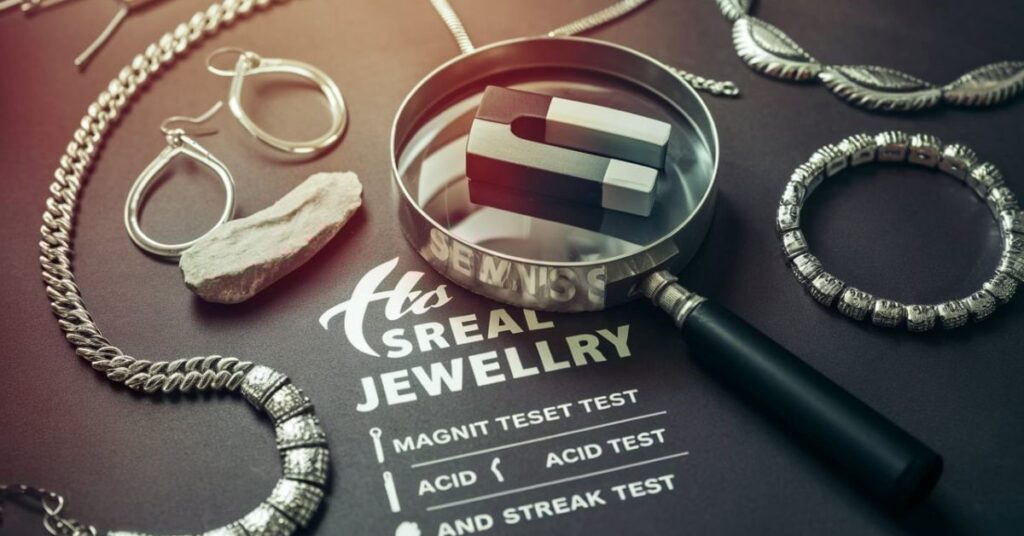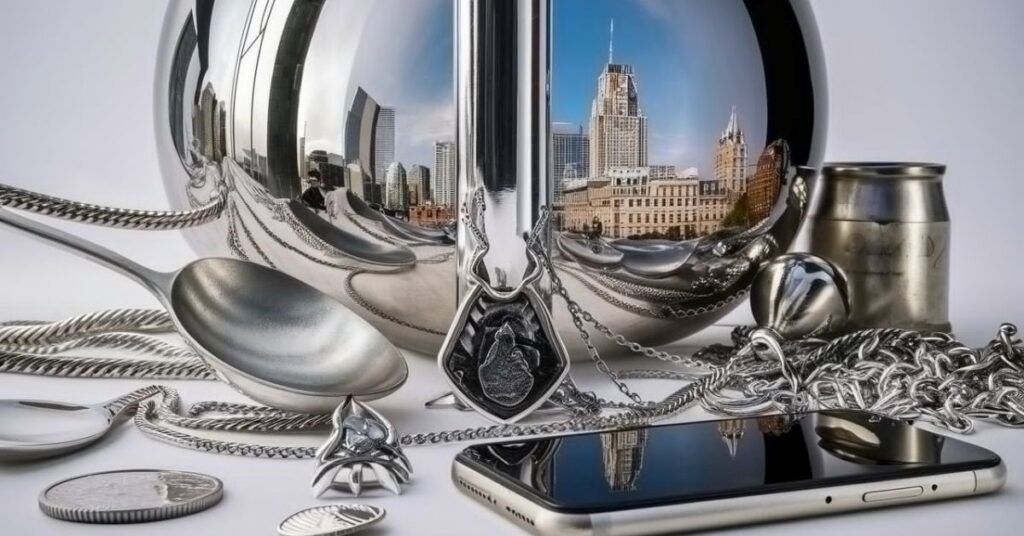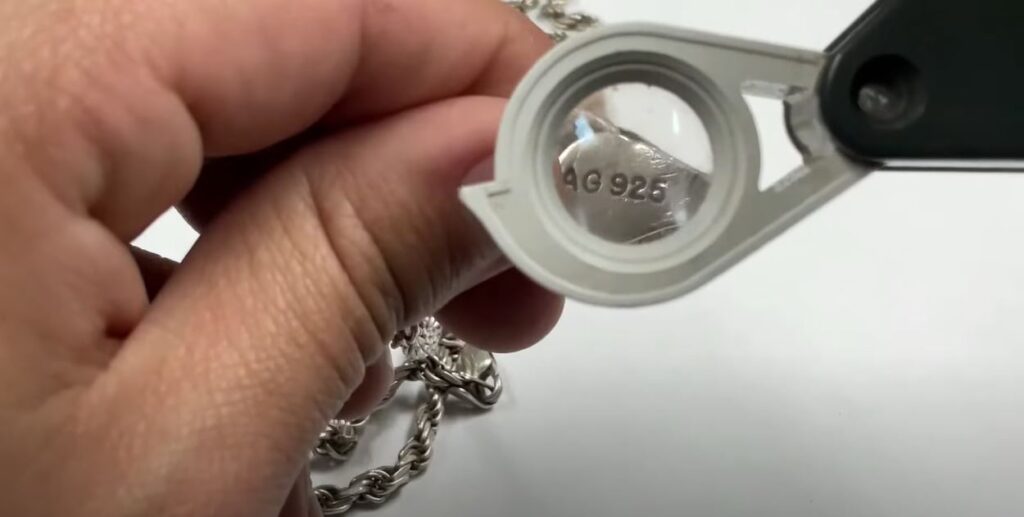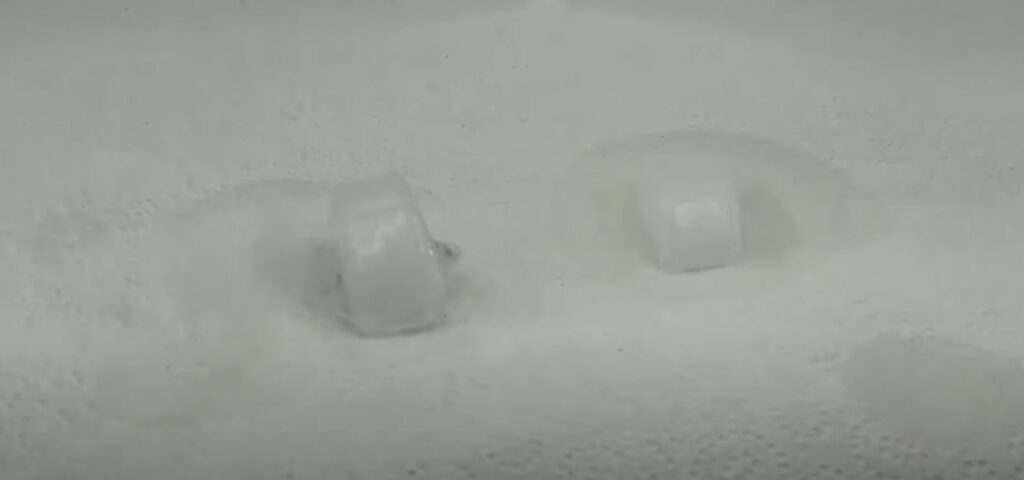How Do You Know if a Necklace is Real Silver
Real silver is a great material for jewelry making. But at times it can be tricky to find its trustworthiness. Whether it is a necklace, ring or an anklet, it is really important to know is your silver the same as it’s written over it. In this article, you’ll find out the answer of is your necklace real silver or not.
Identifying Real Silver
Identifying actual silver starts off with checking for jewelry hallmark stamps. These stamps usually encompass numbers like “925” indicating 92.5 % silver content, that is well known type of silver called sterling silver. You may additionally see terms like “sterling” or small symbols denoting authenticity. An easy way to see these stamps is to use a magnifying glass and spot tiny marks.
These marks are beneath the ring band in case of a wedding ring, while on the clasp of a pendant. If your necklace lacks these marks, it might not be actual silver.
Another way of checking real silver is by trying out simple testing methods at home. Simplest of it includes magnet test. Real silver is never attracted towards magnet. So, if your silver necklace is attracted towards the magnet, it probably contains very low quantity of silver or no silver at all.

Second method to do silver testing is by nitric acid test. Though this test is much more definitive and conclusive than the earlier one, it can be dangerous without using protective gears. Genuineness of a silver necklace is find out by witnessing a chemical reaction between silver and nitric acid.
Before going into detail, first we’ve to understand what types of silver is available in the market so we’re not misguided.
Different Types of Silver
There are various kinds of silver distinguished by their composition and uses.
1. Fine Silver
Fine silver is composed of 99.99% pure silver with a tiny tiny fraction of 0.01% impurities. It is a shiny, soft and inconvenient metal to make jewelries. Fine silver can change its shape with temperature and can be easily bent. That’s why it is not commonly used in jewelry making. Common way to spot this type of silver is by looking for hallmark stamps of 999 or 99.9.
2. Sterling Silver
As described above, sterling silver contains 92.5% of fine silver while other 7.5% is usually copper or Nickle. It makes it sturdy enough to resist wear as an everyday band stand therefore since it is quite durable as far as every day use; this kind if suitable material mostly used to make ordinary rings. Silverware like utensils are usually marked 925 showing they are indeed sterling silver though they need frequent scouring so that they maintain their luster.

3. Nickel Silver
Nickel silver is made without using any actual silver, yet its appearance imitates its genuine counterpart. Cheaper metals like nickel, copper and zinc are used to form nickel silver where it gives an appearance of silver. Main benefits associated with nickel silver are affordability, less tarnishing and long-lasting. It is mainly used in making fake ornaments, musical instruments and other things wanting silver shine.
4. Mexican silver
This type of silver has abundant silver mining sites. It’s composition is normally around ninety five parts pure silver while rest of 5 is made up of other metals making it softer than sterling silver. Jewelries made of this type of silver contain hallmark of “Mexican Silver“, “950” or “95.0” printed on them.
5. Argentium Silver
Argentium silver is a newer type of silver alloy that has more silver in it than sterling silver does. Commonly used percentages of pure silver are 93.5–96% while rest of it is of Argentum. Main purpose of creating this silver type is to tackle the problem of tarnishing.
Silver Jewelry Testing Methods
There are many methods of checking out real silver jewelry. Most reliable of those methods are:
1. Silver Hallmarks Test
There are popular silver jewelry hallmarks which assist in recognizing the source and quality of silver stuffs. For instance, sterling silver usually comes with a “925” or “92.5” imprint suggesting that it is 92.5% pure. Some other common designations consist of “Sterling” or signs denoting individual fabricators or nations.

Those marks are commonly located at hidden areas such as behind necklaces or within rings inner parts. In some cases where items are not new enough one might think of looking at marks showing details about former places they belonged in or regions they were made at. By doing this one saves time”.
2. Magnet Test for Silver
Checking to see if silver is genuine is quite easy with just a magnet. Magnet don’t stick to genuine silver is not a metal with magnetism characters in it since is not magnetic. It’s highly probable that the item is not made of real silver if magnet sticks to it.
It’s simple yet effective because you can do it quickly in your own home without having to spend much time or money. The test will also be useful when you want to have a clear distinction between articles which are platted silver from those made out of different types of metals, but for better measurements other methods must be used as well.
3. Ice Cube Test
Like other precious metals, silver is a great conductor of heat. Take two ice cubes and place a paper towel on a flat surface. Put one ice cube on your silver necklace and other one near to it for a comparison. If your necklace is made out of silver, it will conduct the heat and will melt slower than the one not on the silver necklace.

4. Acid Test
The acid test is a reliable way to determine if silver is real. Apply a drop of nitric acid to a small, hidden part of the item. Real silver will turn creamy white, while fake silver will turn green.
This test should be done with care. You should always wear your protective gloves and work in a well ventilated area in order for it to be safe always. When in doubt consult a professional jeweler for the test.
5. Bleach Test
Bleach is a strong basic compound containing highly oxidative agents like chlorine which immediately react with silver.
Simply put your silver necklace on a paper towel and apply a drop of bleach on it. If it quickly makes a black stain on the necklace, your necklace is made up of silver. Otherwise it is fake. This black stain indicates the tarnishing effect which took place when bleach reacted with silver.
For removing this tarnishing stain, simply read how to remove tarnishing.
6. Professional Silver Verification
Professional silver verification involves taking your item to a certified jeweler. Jewelers use advanced tools and techniques to accurately test silver. They can perform detailed chemical tests and examine the piece under magnification for authenticity.
A professional can also identify specific hallmarks and assess the item’s craftsmanship. This ensures you get an accurate assessment of your silver jewelry’s value. Consulting a professional provides peace of mind and reliable verification.
Precautionary Measures for Tests
Some precautionary measures are inevitable to be taken.
1. Don’t drop chemicals on clasp of the silver necklace. Clasps are mostly not made of silver.
2. Use protective goggles and gloves for any mishap.
3. Do all the tests outdoor.
4. Most of the testing chemicals highly volatile leading to toxic fumes. Use proper chemical handling masks if necessary.
Can we use Same Testing Methods for Every Jewelry
Yes you can use these 4 methods described above for every silver jewelry. Most important thing you’ve to identify is that what composition your silver jewelry is made of. If it is of sterling silver, the composition will remain same for every jewelry item. And similar thing goes on with other types of silver.
Conclusion
Determining if a necklace is real silver involves several easy tests and visual checks. Look for hallmark stamps like “925” to indicate silver purity. Simple home tests, such as the magnet and acid tests, can quickly reveal if the silver is genuine.
For the most accurate results, consult a professional jeweler who can perform advanced tests and verify hallmarks. Real silver has a distinctive look and feel, including tarnishing over time. Using these methods ensures you can confidently identify real silver jewelry.

